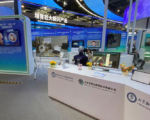U.S. federal regulators have requested more information from Zoox, Amazon’s self-driving unit, as part of an investigation into rear-end crash risks posed by unexpected braking.
The National Highway Traffic Safety Administration (NHTSA) opened a preliminary investigation into Zoox on May 10 after it received two reports of Zoox vehicles unexpectedly braking, leading to rear-end collisions with motorcyclists that resulted in minor injuries. Zoox has a permit from California’s Department of Motor Vehicles to test its vehicles without a safety driver in Foster City and in parts of San Francisco.
On Thursday, the agency gave Zoox a deadline of July 12 to send more information to aid its investigation. The letter details a list of 13 requests for information, including the number of miles driven on public roadways with self-driving software engaged by geographic region; the number of AV-commanded hard braking events with and without onboard human supervision; a list and summary of braking incidents; a detailed timeline of events beginning 30 seconds prior to each incident; and copies of videos, graphical renderings of measured trajectories and predicted paths for each road user and other data beginning 30 seconds before each incident.
NHTSA already confirmed through an initial investigation of both incidents that each of Zoox’s Toyota Highlanders were operating with the company’s autonomous vehicle software engaged in the moments leading up to the collisions.
In a letter from NHTSA’s Office of Defects Investigation (ODI) dated May 30, the agency said that in both reported incidents, the Zoox vehicles hit the brakes in response to another road user that was not directly in front of them.
“ODI is concerned that vehicles exhibiting unexpected rapid braking may increase the risk of crash, property damage and injury,” reads the letter. “The risk is particularly acute to road users behind the Zoox vehicles who are unable to reasonably anticipate or react to the unexpected sudden braking.”
The investigation will evaluate the performance of Zoox’s automated driving system, as well as its behavior in crosswalks around vulnerable road users and in other similar rear-end collision scenarios.
The two incidents that led to this investigation involved motorcyclists, who often trail closely behind cars and split lanes. NHTSA’s action in this case might be a sign of heightened scrutiny of autonomous vehicle companies after GM’s Cruise lost its permits to operate in California after withholding information about an incident that resulted in a Cruise robotaxi running over and dragging a pedestrian 20 feet.










